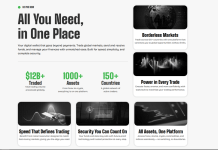Marketing that moves leases is math plus message. Analytics tell you where demand lives, what prospects want, and when to put a rep on the phone. Used well, data speeds tours, trims wasted spend, and lifts NOI (net operating income) across office, retail, industrial, and mixed-use assets. If you want faster deal cycles and cleaner pipelines, read more and put your numbers to work.
Why analytics matter in CRE
You care about leasing velocity and NOI. Analytics let you target people and companies who are actually in-market, not just “interested.” That means fewer cold calls, fewer unqualified tours, and more signed leases.
Good analytics also shorten deal cycles. When you know which roles engage, which messages convert, and which channels produce qualified tours, your team focuses on the next best action instead of guessing.
The data that actually moves deals
Start with first-party data. Your CRM and ILS inquiry history holds gold: company size, industry, lease expiry dates, budget, suite preferences, and tour notes. Tie that to website behavior and lead forms so you can see which pages, amenities, and floor plans signal real intent.
Layer geospatial and mobile data to understand live trade areas. Foot traffic around retail corridors, device movement patterns near industrial parks, and commuter flows to office nodes help you localize outreach and pricing. Market comps, absorption, and tenant mix signals round out the picture so you can position each asset precisely against its submarket.
From insights to action: campaigns, pages, and tours
Build segments that match real demand. Create cohorts like “office renewals in 6–12 months,” “DTC retailers adding two stores,” or “3PLs seeking 100–200k SF within 45 minutes of port.” Feed them intent signals from search queries, repeat visits to availability pages, and map interactions, then route hot prospects to reps for personal follow-up.
Use your channel mix with intent, not habit. Coordinate search, programmatic, social, and email campaigns around the same audience definitions and goals; if you partner with a specialist, or even a reliable SEO agency in Orlando, align budgets with the keywords and cohorts that drive qualified tours. Test creative weekly. Headlines that highlight parking ratios, clear heights, or TI flexibility often outperform generic branding when a tenant is close to touring.
Fix the property page. Put key specs above the fold, add a 30–60 second walkthrough video, show stack plans, and make availability scannable. Add an instant tour scheduler tied to broker calendars, along with a short contact form that qualifies without scaring people off. For retail and mixed-use, embed foot traffic snapshots and co-tenancy highlights so prospects can picture performance, not just space.
Measure, govern, and get started
Trade vanity metrics for deal metrics. Track cost per qualified tour, cost per signed lease, time-to-lease, and pipeline contribution by channel and campaign. Use multi-touch attribution to see how search, paid social, and broker outreach work together to drive tours. Think like a portfolio operator: estimate the lifetime value of a tenant by asset and compare to acquisition cost, so budgets map to NOI, not clicks.
Guard privacy and data quality. Collect consent clearly, store only what you need, and respect opt-outs. Build a clean pipeline that dedupes leads across portals, forms, and broker emails. Define one source of truth, and kill dashboards that celebrate impressions without a line to tours or leases.
Start small and prove it. Pick one asset, one audience, and one conversion goal, then run a 6–8 week pilot. Your basic dashboard should show reach, engaged visits to availability pages, tour requests, qualified tours, and leases with sourced pipeline value. In 30 days, validate tracking and early intent signals. In 60 days, shift spend toward segments producing tours and pause low-yield creatives. In 90 days, present signed-lease impact, lessons, and a plan to scale to the next asset or submarket.
Final thoughts
Analytics will not replace your relationships or your local knowledge. They sharpen them. When you see which messages land and which tenants lean in, you spend less to win more. Tours get smarter, leases close faster, and investors trust your numbers. If you want a repeatable system that compounds across the portfolio, read more and make analytics the backbone of your CRE marketing.








